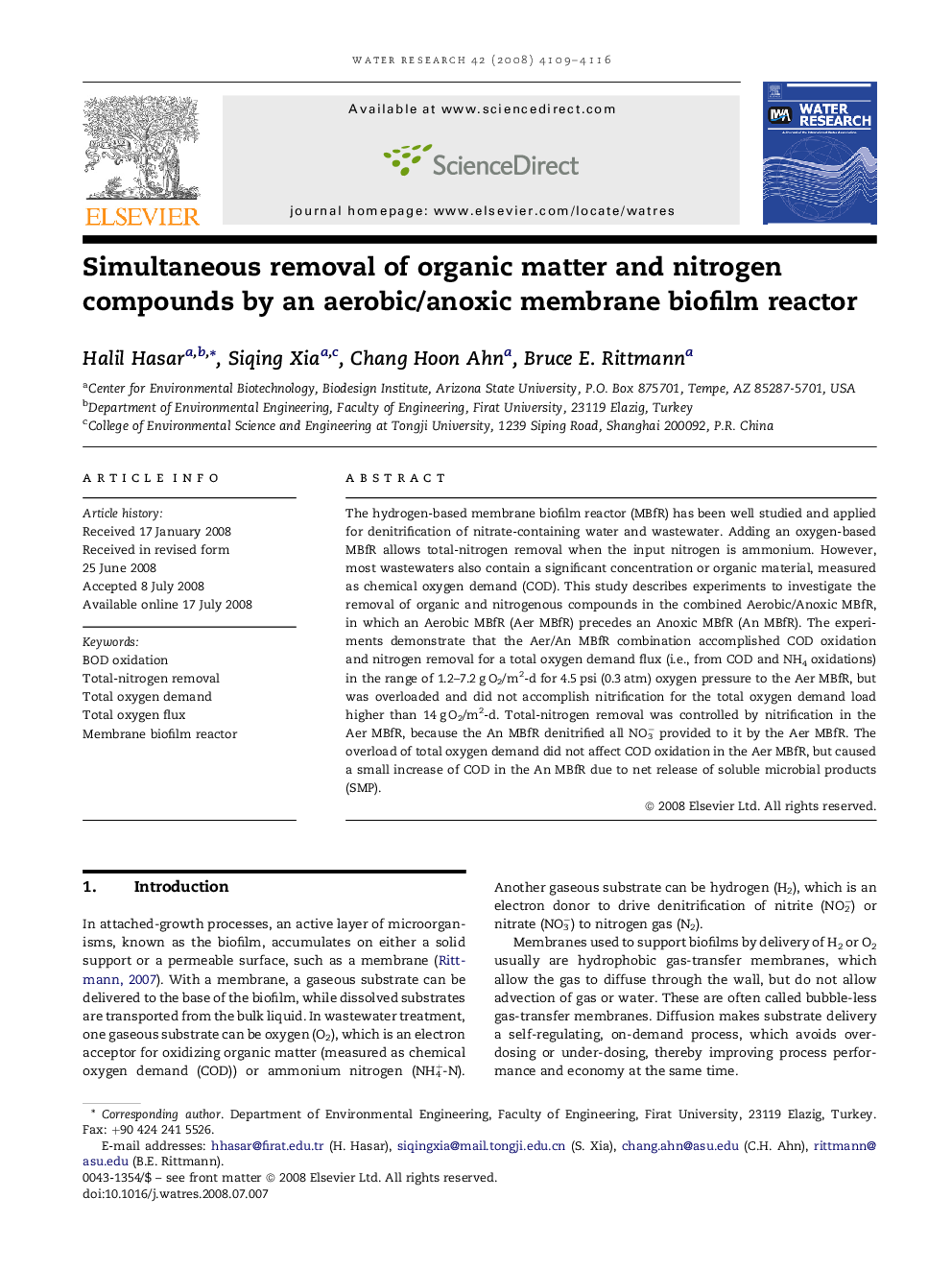| Article ID | Journal | Published Year | Pages | File Type |
|---|---|---|---|---|
| 4484809 | Water Research | 2008 | 8 Pages |
The hydrogen-based membrane biofilm reactor (MBfR) has been well studied and applied for denitrification of nitrate-containing water and wastewater. Adding an oxygen-based MBfR allows total-nitrogen removal when the input nitrogen is ammonium. However, most wastewaters also contain a significant concentration or organic material, measured as chemical oxygen demand (COD). This study describes experiments to investigate the removal of organic and nitrogenous compounds in the combined Aerobic/Anoxic MBfR, in which an Aerobic MBfR (Aer MBfR) precedes an Anoxic MBfR (An MBfR). The experiments demonstrate that the Aer/An MBfR combination accomplished COD oxidation and nitrogen removal for a total oxygen demand flux (i.e., from COD and NH4 oxidations) in the range of 1.2–7.2 g O2/m2-d for 4.5 psi (0.3 atm) oxygen pressure to the Aer MBfR, but was overloaded and did not accomplish nitrification for the total oxygen demand load higher than 14 g O2/m2-d. Total-nitrogen removal was controlled by nitrification in the Aer MBfR, because the An MBfR denitrified all NO3− provided to it by the Aer MBfR. The overload of total oxygen demand did not affect COD oxidation in the Aer MBfR, but caused a small increase of COD in the An MBfR due to net release of soluble microbial products (SMP).
